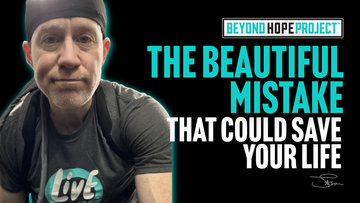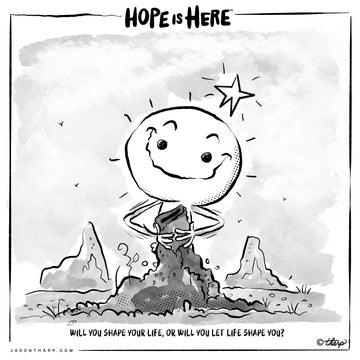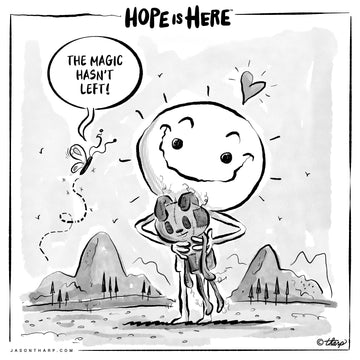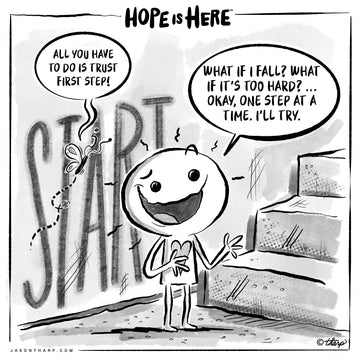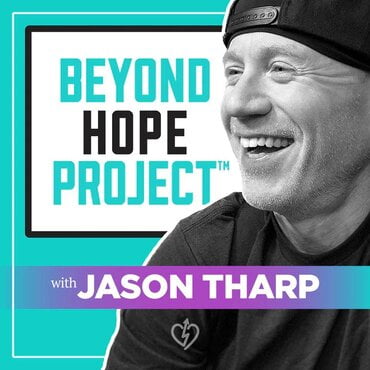meta name="description" content="Discover how medical breakthroughs come from funded failures. Brain cancer survivor Jason Tharp reveals why your donation to research could fund the next life-saving 'mistake' like penicillin or AZT.">
The Beautiful Mistake That Could Save Your Life: How Medical Breakthroughs Come from Funded Failures
By Jason Tharp, Brain Cancer Survivor and Keynote Speaker
Four years ago, doctors handed me a death sentence wrapped in medical terminology. Grade 4 Glioblastoma. Seven months to live. The most aggressive form of brain cancer, they said. No cure. No hope.
I'm still here.
Not because of a miracle drug or groundbreaking treatment. I'm here because someone, somewhere, was funded to make mistakes. Beautiful, life-saving mistakes that led to the experimental treatments that bought me time. That gave me hope. That allowed me to write these words today.
The Accident That Changed Medical History
In 1928, Alexander Fleming left his lab window open. A mold spore drifted in, contaminated his bacterial cultures, and ruined his experiment. Most scientists would have thrown it away and started over. Fleming looked closer. That "ruined" petri dish became penicillin—the discovery that has saved over 200 million lives.
Fleming didn't set out to discover the world's first antibiotic. He was studying something completely different. But he had funding. He had time. He had permission to fail.
The Beautiful Pattern of Medical Breakthroughs
Every medical breakthrough follows the same pattern. Someone gets curious about a failure. Someone gets funded to explore the impossible. Someone discovers that what we thought was a dead end was actually a doorway.
Historical Examples of "Failed" Experiments That Saved Lives:
AZT was originally developed as a cancer drug. It failed. Completely. For twenty years, it sat on a shelf, labeled as worthless. Then the HIV crisis hit, and desperate researchers started testing old "failed" drugs. AZT became the first effective HIV treatment, transforming a death sentence into a manageable condition.
Rogaine was supposed to treat high blood pressure. It didn't work. But patients started growing hair in unexpected places. Today, it's helped millions of people regain their confidence and their sense of self.
CRISPR gene editing—the technology that might one day cure genetic diseases—was discovered by accident while studying how bacteria fight off viruses. The researchers weren't trying to revolutionize medicine. They were just curious about bacterial immune systems.
The Shift: Your Mistake Might Be Someone's Miracle
Here's what I've learned in my four years of borrowed time: Hope isn't a passive wish—it's a strategy. And sometimes that strategy requires funding failure.
Right now, in labs across the world, researchers are making mistakes. Beautiful, necessary mistakes. They're testing compounds that don't work the way they're supposed to. They're exploring dead ends that might not be dead at all. They're failing forward, one experiment at a time.
But here's the problem: Most of these "failures" never get a second look. Not because they're not promising, but because there's no funding to explore them further. The cure for brain cancer—for your cancer, for your loved one's cancer—might already exist in a discarded petri dish. In a "failed" experiment. In a researcher's notebook marked "didn't work."
The Uplift: We Are the Funding for Tomorrow's Breakthroughs
Every time you donate to brain cancer research, you're not just funding success. You're funding the beautiful mistakes that lead to breakthroughs. You're giving researchers permission to fail spectacularly, to explore the impossible, to look closer at what everyone else throws away.
You're funding curiosity. You're funding time. You're funding the next accidental discovery that could change everything.
The researcher who discovers the cure for brain cancer probably won't be looking for it. They'll be studying something else entirely. They'll make a mistake. They'll notice something unexpected. And because of your donation, they'll have the resources to explore it.
Take Action: Fund the Beautiful Mistakes
I'm not asking you to donate because you feel sorry for people like me. I'm asking you to donate because you want to be part of something historic. Because you understand that breakthroughs don't come fro
I’m playing it safe—they come from funding the courage to fail.
Every dollar you give to brain cancer research is a vote for curiosity over certainty. For exploration over explanation. For the beautiful mistakes that become tomorrow's miracles.
The next Alexander Fleming is out there right now, probably frustrated that their experiment didn't work the way they planned. Let's make sure they have the funding to look closer.
The next miracle might be waiting in a petri dish. Let's make sure someone has the funds to look for it.
How You Can Help Fund Medical Breakthroughs:
- Donate to brain cancer research at:abta.org
- Register for the American Brain Tumor Association National Conference this September, where I'll be delivering the keynote on hope as strategy
- Support glioblastoma research at abta.org/glioblastoma where your donations will be matched by generous sponsors
Together, we can fund the beautiful mistakes that become tomorrow's breakthroughs.
Jason Tharp is a brain cancer survivor, keynote speaker, and founder of the Beyond Hope Project. He transforms the "impossible" into possible through his H.O.P.E. Algorithm: Hyper-Aware, Open-Hearted, Persistent, Empowering. Learn more at jasontharp.com.
brain cancer research funding, medical breakthroughs, glioblastoma survival, cancer research donations, accidental medical discoveries, hope strategy, brain tumor research

